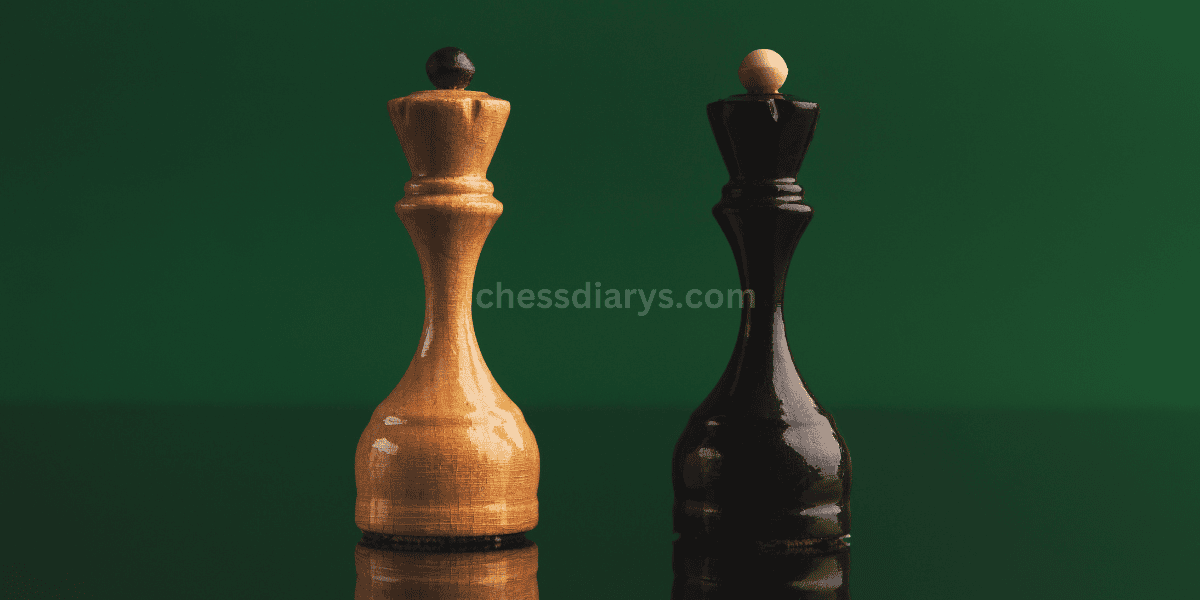The queen is often considered the most powerful chess piece, so developing methodologies around her movements will be crucial for one’s overall success with the game. How a queen can move in chess, its unique features of movement, and how to use this powerful piece strategically in one’s games are detailed here.
Introduction to the Queen in Chess
The queen is often considered the centerpiece of a game of chess because of the incredible versatility it possesses. Unlike most other pieces, which are restricted in their movement, the queen can control an enormous portion of the chessboard. If you ask, How does a queen move in chess?-well, the answer is surprisingly simple yet powerful. It can combine the powers of two other major pieces, the rook and the bishop and is often the most important pieces in both the attack and the defense alike.
The Basic Movement of the Queen
So, how does a queen move in chess? The queen moves along straight lines horizontally, vertically, and diagonally. That is to say, the queen has the privilege of traveling across the chessboard along ranks, files, and diagonals without any restrictions. The queen can move the maximum possible distance in any direction until it faces another piece, either friendly or enemy. This enables her to master more squares than any other piece on the board.
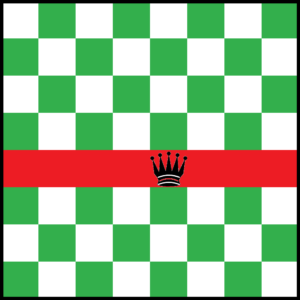
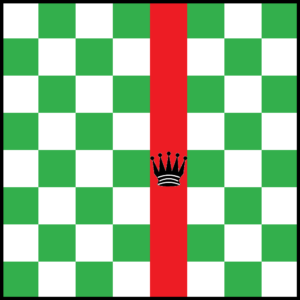
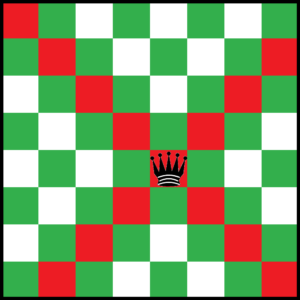
To summarize:
- The queen can move horizontally (like a rook).
- The queen can move vertically (like a rook).
- The queen can move diagonally (like a bishop).
- The queen can move in any of these directions as far as the board allows.
This vast range of motion makes the queen a critical asset for dominating the center and launching powerful attacks.
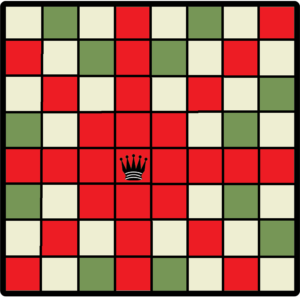
This Black Queen can move to any red square from her position.
Combination of Rook and Bishop Powers
The key myth taken about the queen in chess is that it has some extra special type of movement. Actually, the queen moves exactly like both the rook and the bishop. The queen can move like a rook on ranks and files and like a bishop along diagonals. What makes the queen stand out, however, is that it combines these abilities into one piece. This might enable her to be dual-capable for any situation, as it could switch between offence and defiance in quick order.
For instance, you place the queen on an open file-a vertical column-and it commands every square on that file, putting pressure on any enemy pieces that block her way. On an open diagonal, it may command a great range of squares, making her perfect for pinning the enemy pieces or threatening an attack from afar.
Queen in Attacks
One of the most common methods to win a game of chess involves the use of tactical play with the queen. Being highly mobile and having such a wide range of movement, it is able to conduct both close and long-range attacks. Given below is how the queen can be most effective in attacks:
- Forking multiple pieces: Because the queen moves in various ways, it can often fork two or more of the opponent’s pieces. This is the result when the queen is attacking several high-value pieces simultaneously, and the opponent is forced to lose material.

Checkmating the enemy king

Forking multiple pieces
- Checkmating the enemy king: Her long-distance movements are essential in the art of checkmating. A queen is able to lock an enemy king by controlling the main squares around the king, especially in combination with a rook or knight.
- Support of other pieces: A queen can also support an attack of one or more other pieces, serving as a backup without necessarily being an attacker, which makes her exceptionally valuable in heavy tactical combinations.
It shouldn’t be moved too early in the game, however, despite her power. Of course, the temptation may be there to use her immediately, but overextension and susceptibility to counterattacks may occur.
Queen in Defense
As powerful as the queen can be when attacking, it can also be a strong defender. So how does the queen move in chess to defend? Here are some strategies for defense that involve the queen.
- Guarding key squares: The range of the Queen enables her to guard more than one square at once in defense. The queen can guard the important squares of your position that might otherwise be attacked by the enemy with impunity, while at the same time it is shield-defending and getting ready to counterattack.
- Countering enemy queens: The queen can easily be utilized to neutralize the opponent’s queen by directly attacking her on the board. Trading queens can often make a complicated position simpler, and an endgame easier to achieve if you’re ahead in material.
- Blocking attacks: The queen can similarly be used to bar any enemy attack by standing on the line of defense, usually against rooks and bishop attacks.
Common Mistakes to Avoid with the Queen
Following are some of the common mistakes made by the beginners while learning the queen’s move in chess:
- Over-reliance on the queen: Since the queen is powerful, many chess players rely upon her excessively and develop her prematurely into the game. Sometimes, this may backlash-the opponent will be able to attack her in such a way that you will be forced to make disadvantageous exchanges or be weakening your position in general.
- Putting the queen in danger: This often leaves the queen in a position that it is under attack by less valuable pieces, such as knights and pawns. Never find yourself in a position where your queen is not well-guarded, with other pieces ahead of her whenever you make a bold move.
Queen Promotion
One of the more special things about the function of the queen involves pawn promotion. When a pawn reaches the other side of the board, it can be promoted to any piece, but most players decide to promote to a queen. The reason for this is that an extra queen can double your attacking power and, in many cases, lead to checkmate.
Queen promotion is arguably one of the strongest endgame tactics there is. For just a second, think of having two queens out on the board simultaneously! Having the option to survey so many squares really weighs in your favor significantly. Being able to promote pawns is yet another crucial part of mastering how the queen moves.
Conclusion
The question now arises, how does a queen move in chess? The queen happens to be the most versatile and strong piece on the board. The queen possesses qualities of both the rook and bishop. It can move horizontally, vertically, or even diagonally. This allows her to cover major areas. The queen is mainly required for attacks and defenses, which are critical in the takeover of the board and the delivery of checkmate with much ease. Carefully considering how one will use the queen to neither overcommit nor expose her to attack.
In summary:
- The queen can move any number of squares in all directions—horizontally, vertically, and diagonally.
- The queen is powerful in both attack and defense but must be used wisely.
- Queen promotion can be a game-changing tactic in the endgame.
With a clear understanding of how a queen can move in chess, you can unlock new strategies and become a more formidable chess player!


